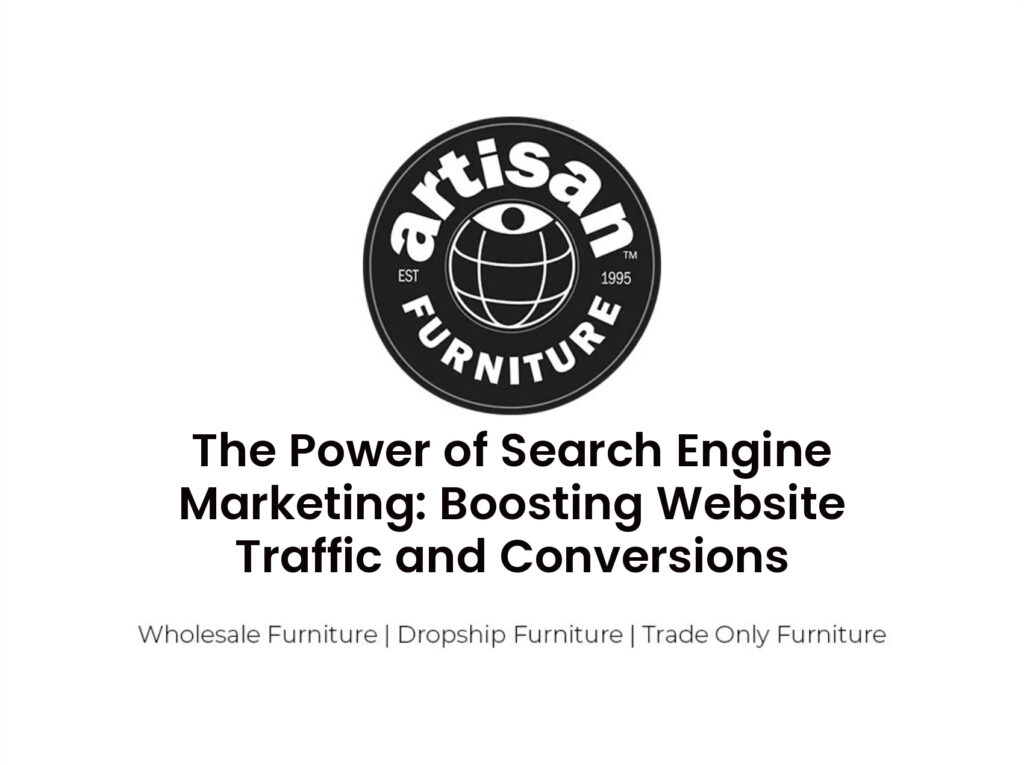The Power of Search Engine Marketing: Boosting Website Traffic and Conversions
In today’s digital landscape, search engine marketing (SEM) has emerged as a powerful tool for businesses looking to boost website traffic and conversions. With both paid and organic techniques, SEM optimizes a website’s visibility in search engine results pages (SERPs), driving more visitors and potential customers. This article explores the significance of SERPs in driving website traffic and discusses popular search engines like Google, Bing, and Yahoo. It also delves into different SEM techniques, such as paid ads and SEO strategies, along with tools to optimize SEM campaigns.
Table of Contents
ToggleThe Benefits of Search Engine Marketing
Search engine marketing offers numerous benefits, such as increasing website traffic and driving conversions, making it an essential strategy for businesses looking to achieve online success. By utilizing search engine marketing techniques, businesses can place their ads in front of potential customers who are actively searching for products or services related to their industry. This targeted approach allows businesses to reach the right audience at the right time, increasing the likelihood of driving relevant traffic to their website. Furthermore, search engine marketing allows businesses to track and measure the success of their campaigns, providing valuable insights into consumer behavior and preferences. This data can then be used to optimize future marketing efforts, ultimately leading to higher conversion rates and greater return on investment.
Maximizing Website Traffic Through SEM Techniques
By utilizing a combination of paid and organic techniques, marketers can effectively increase the number of visitors to their websites. Paid search engine marketing (SEM) techniques, such as search ads and display ads, can help drive immediate traffic to a website. On the other hand, organic search engine optimization (SEO) techniques, such as on-page optimization and off-page optimization, can improve a website’s visibility in search engine results over time. By incorporating both paid and organic strategies, marketers can maximize their website traffic and reach a wider audience.
| Paid SEM Techniques | Organic SEO Techniques |
|---|---|
| Search ads | On-page optimization |
| Display ads | Off-page optimization |
| Product listing ads | Adhering to search engine guidelines |
| Mobile ads |
This combination of strategies allows marketers to target both potential customers who are actively searching for products or services, as well as those who may be more passive in their search behavior. By utilizing a diverse set of techniques, marketers can increase their website’s visibility, attract more visitors, and ultimately, drive conversions.
Converting Visitors Into Customers With SEM Strategies
Utilizing effective SEM strategies can help marketers turn website visitors into loyal customers by optimizing their advertising campaigns and targeting the right audience.
-
By leveraging paid search ads, marketers can increase their visibility in search engine results and attract more qualified traffic to their websites.
-
Retargeting techniques allow marketers to reach out to users who have previously expressed interest in their products or services, increasing the likelihood of conversion.
-
Additionally, optimizing landing pages and website content based on search engine guidelines can enhance user experience and encourage visitors to take desired actions, such as making a purchase or filling out a lead form.
Leveraging Paid Search Advertising for Website Growth
Paid search advertising is an effective strategy for driving website growth and increasing online visibility. By leveraging paid ads, businesses can reach a wider audience and attract more potential customers. These ads are displayed on search engine results pages (SERPs) alongside organic content, making them highly visible to users actively searching for relevant information or products.
Here’s a breakdown of the components of a SERP and the market share of popular search engines:
| Component | Description |
|---|---|
| Organic Content | Search engine optimization techniques |
| Paid Content | Search engine marketing techniques |
| 77.82% market share, 1.6 billion monthly visitors | |
| Bing | 7.96% market share, 400 million monthly visitors |
| Baidu | 6.37% market share globally, dominates Chinese market |
| Yandex | Leading search engine in Russia with 60% market share |
| Yahoo | 6.58% market share, 300 million monthly visitors |
Optimizing Organic Search to Drive Website Conversions
Google Analytics, Google’s Search Console, and Google’s Keyword Planner are valuable tools for optimizing organic search and increasing website conversions. These tools provide insights into website performance, keyword research, and campaign optimization.
- Google Analytics offers in-depth data on website traffic, user behavior, and conversion rates. It helps identify strengths and weaknesses in organic search campaigns and provides actionable insights for improvement.
- Google’s Search Console allows website owners to monitor their site’s presence in Google Search results. It provides information on search queries, crawl errors, and website indexing. By fixing errors and optimizing content, website owners can enhance their organic search visibility.
- Google’s Keyword Planner assists in finding relevant keywords for organic search optimization. It provides data on keyword search volume, competition, and suggested bid. By targeting the right keywords, website owners can attract more qualified traffic and increase conversions.
These tools are indispensable for businesses looking to maximize the potential of their organic search efforts and drive website conversions.
Analyzing and Improving SEM Campaign Performance
Marketers can analyze and improve the performance of their SEM campaigns by utilizing various tools and techniques. One of the primary tools for optimizing SEM campaigns is Google Analytics, which provides valuable insights into website performance and user behavior. Marketers can track key metrics such as click-through rates, conversion rates, and bounce rates to identify areas for improvement. Another useful tool is Google’s Search Console, which helps to monitor the website’s presence in search results and identify any issues that may be affecting its performance. Additionally, Google’s Keyword Planner can assist in conducting keyword research and identifying relevant keywords to target in SEM campaigns. By utilizing these tools and techniques, marketers can make data-driven decisions to optimize their SEM campaigns and drive better results in terms of website traffic and conversions.


